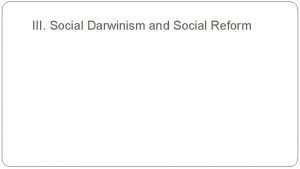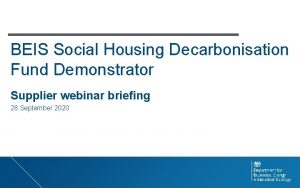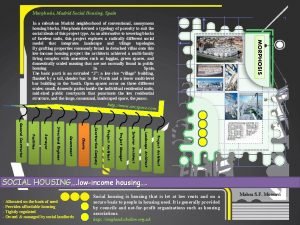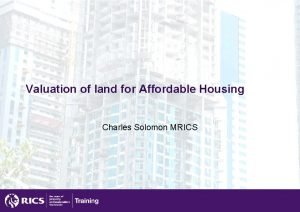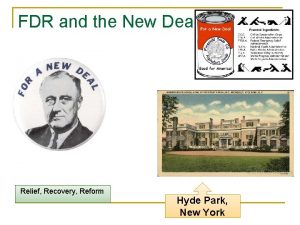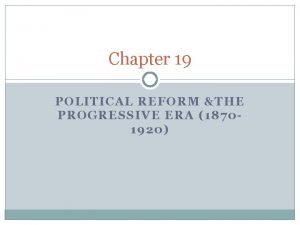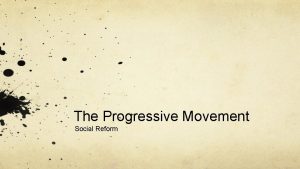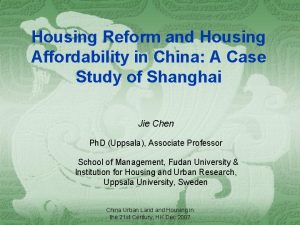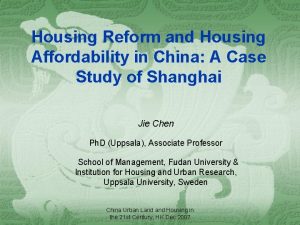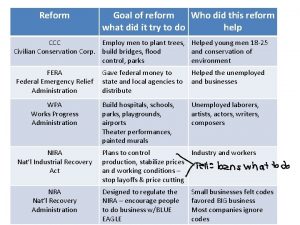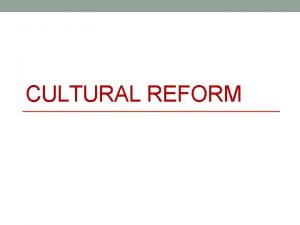Housing Marketization Reform and Social Class LI Yu
















- Slides: 16

Housing Marketization Reform and Social Class LI, Yu Survey Research Laboratory, Institute of Sociology, Shanghai Academy of Social Sciences, Shanghai, China; LU, Hanlong Institute of Sociology, Shanghai Academy of Social Sciences, Shanghai, China

Housing Distribution in Market Transition • The changing mechanisms during the market transition – Market transition debate • market transition theory • power persistence theory – House inequality • Market societies – Commodity – Class phenomenon • State redistributive societies – Welfare item – Majority people vs. elites – Inequality between work-units

Social class in Housing Marketization Reform • Research Question: – To what extent has China’s urban housing been transformed into a system in which housing distribution is a function of social class differentiation? – Who got more? – Cadre vs. manger

Housing Marketization Reform • Three phases – Pilot experiment : 1978 -1991 – Double track: 1992 -1998 – Full marketization: 1999 – (Li & Yi 2007)

Data • Residential relocation and urban restructuring: A Multi-city study of urban China – – Shanghai 2005/6 Urban area 2000 cases Housing history data

Variables and Measurement • Measuring House inequality – Chance to get a house – House size – House quality • Index 1 – Toilet (have=1, share / no =0) – Kitchen (have=1, share / no =0) – Balcony (have=1, share / no =0) • Index 2 – Year of house built (after 1990=1) – Location: (central area=1) – House type (townhouse, apartment =1) – Value of the house

Variables and Measurement • Social Class – Cadre: • High & Middle rank officials in Gov. & Non. Profit Institution (Chu & above) – Mangers in SOE • High-rank Mangers in State-Owned Enterprises – – – Mangers in market sector Professional Routine non-manual Skilled manual worker Non-skilled manual worker

Variables and Measurement • Control variables – TVCs (Time Varying Covariates) • Age & Age square • Work-Unit type – Government agency & Non-profit institution – State/Collective enterprise (Reference group) – Market Sector • Family size • Marriage status (Married =1) • Location of the house (central area=1) – Others (Not TVC) • Education (year of schooling) • Party Membership (CCP=1) • Hu Kou (Migrants=1)

Preliminary Result

Cox regression on getting a house

OLS Regression of housing size (Ln)

OLS Regression of housing Quality index 1

OLS Regression of Housing Quality index 2 • Social Class

OLS regression of Current House Value (Ln)

Conclusion • housing inequality in full. Marketization phase – Clear pattern • Hierarchy of social occupational class – inconsistent results on who get more • Both get rewarded • Cadre < manger ? – More careful analysis is needed

Q&A
 What was reform darwinism?
What was reform darwinism? Fha new deal: relief, recovery, reform
Fha new deal: relief, recovery, reform Social thinking social influence social relations
Social thinking social influence social relations Social thinking social influence social relations
Social thinking social influence social relations Beis social housing decarbonisation fund
Beis social housing decarbonisation fund Madrid social housing morphosis
Madrid social housing morphosis Social housing canada
Social housing canada Valuing land for social housing
Valuing land for social housing Chapter 10 section 1 democratic reform and activism
Chapter 10 section 1 democratic reform and activism Chapter 10 section 1 democratic reform and activism
Chapter 10 section 1 democratic reform and activism Chapter 23 lesson 3 nationalism unification and reform
Chapter 23 lesson 3 nationalism unification and reform The ferment of reform and culture
The ferment of reform and culture Revolution brings reform and terror
Revolution brings reform and terror Taxation and budget reform commission
Taxation and budget reform commission Examples of relief recovery and reform
Examples of relief recovery and reform Chapter 19 political reform and the progressive era
Chapter 19 political reform and the progressive era Chapter 15 the ferment of reform and culture
Chapter 15 the ferment of reform and culture
